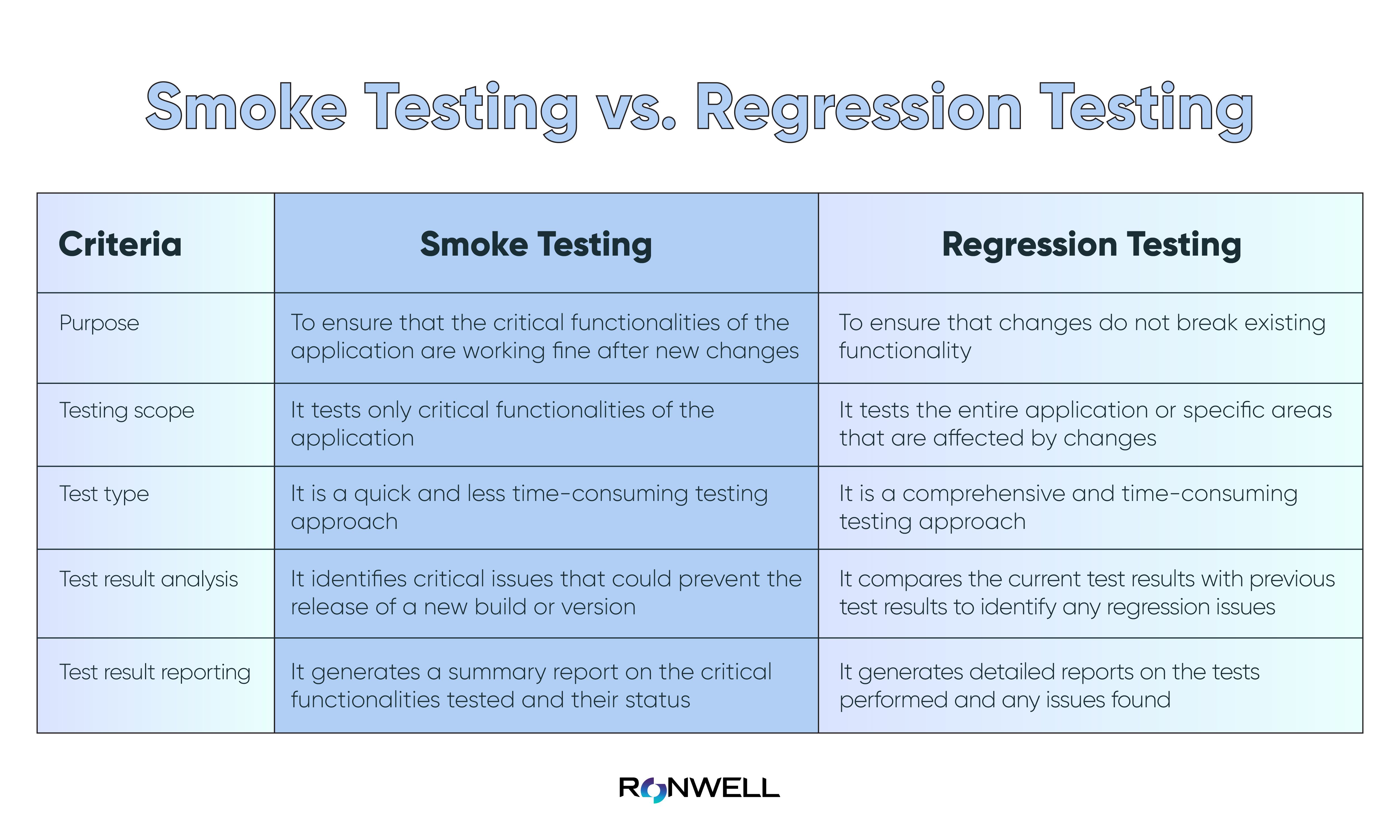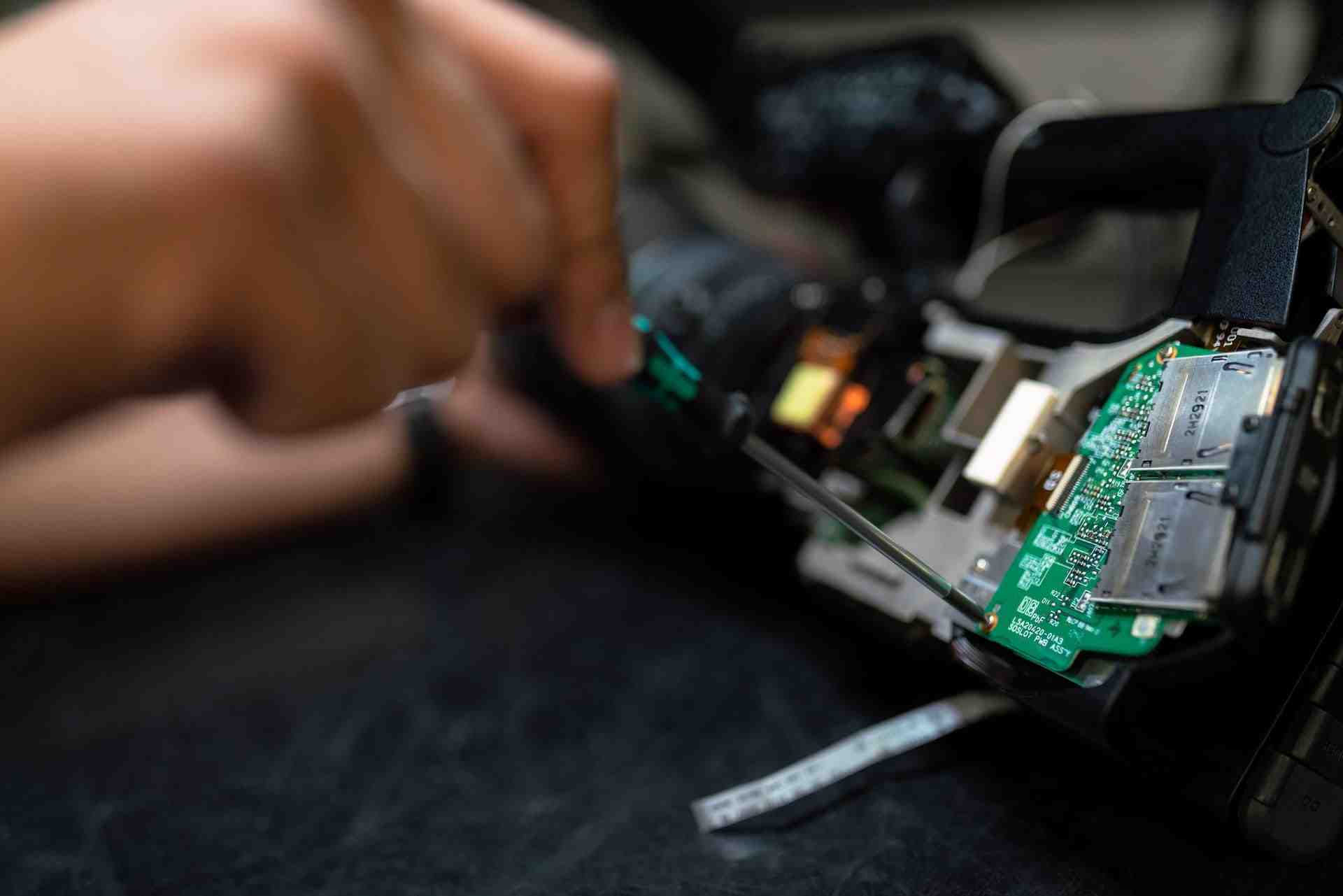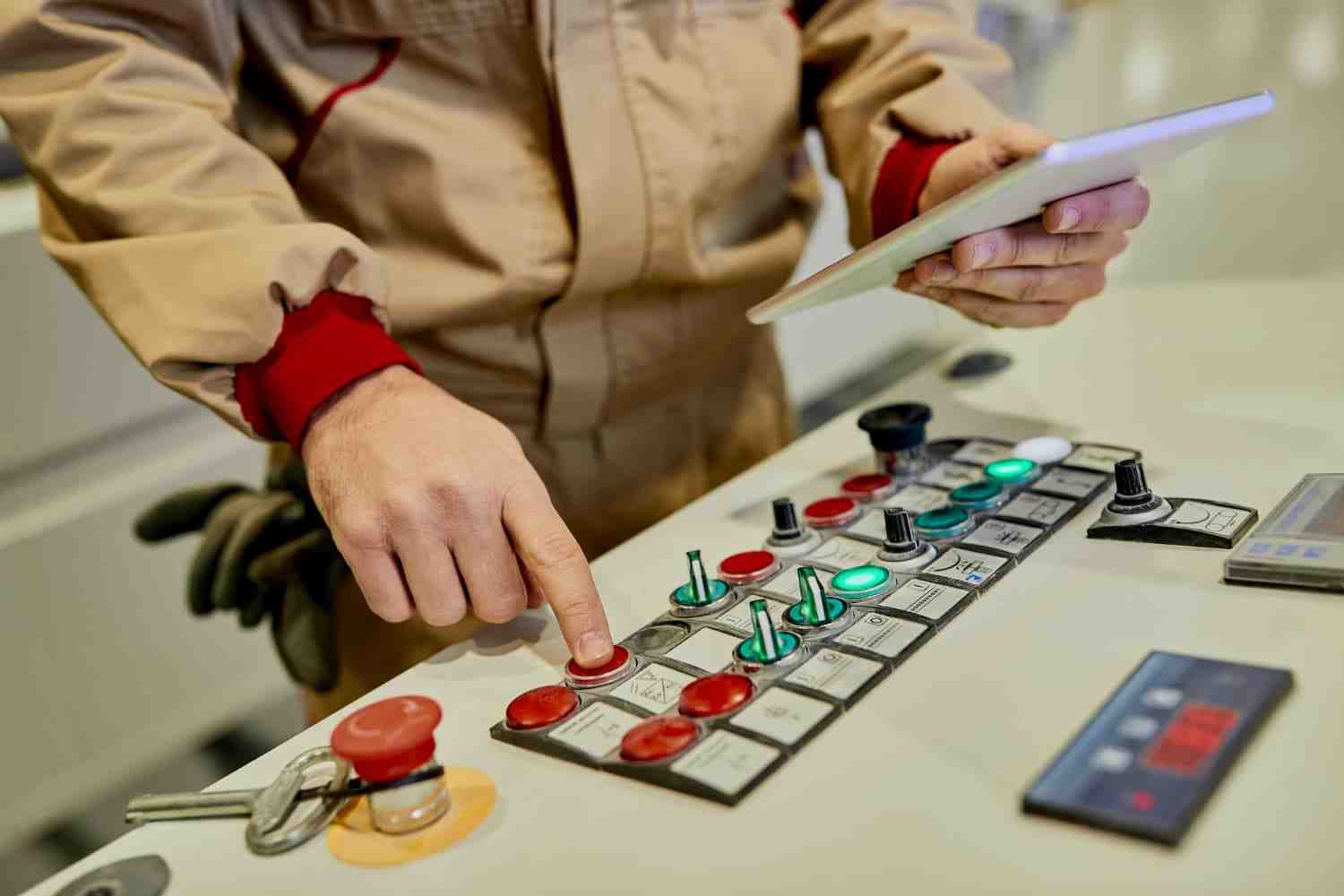

Our Services
Test Automation ServicesAI & Machine LearningBlockchainCRM ConsultingData Science & EngineeringDevOpsDigital MarketingDigital TransformationEmbedded Software DevelopmentERP Consulting ServicesManaged IT ServicesMergers & Acquisitions AdvisoryQA And Testing ServicesRobotic Process Automation SAP Consulting DevelopmentSoftware and Application DevelopmentSQL ConsultingStrategy ConsultingSustainability
- Contact Us
Our Services
- Test Automation Services
- AI & Machine Learning
- Blockchain
- CRM Consulting
- Data Science & Engineering
- DevOps
- Digital Marketing
- Digital Transformation
- Embedded Software Development
- ERP Consulting Services
- Managed IT Services
- Mergers & Acquisitions Advisory
- QA And Testing Services
- Robotic Process Automation
- SAP Consulting Development
- Software and Application Development
- SQL Consulting
- Strategy Consulting
- Sustainability
Insight
Company
Industries
- Contact Us

Smoke Testing vs Regression Testing: Which One to Use and When?
Learn the differences between smoke testing and regression testing, and why both are crucial for ensuring the quality and stability of your application.
- insight
- /
- blog
- /
- smoke-testing-vs-regression-testing
Your testing goals will determine whether you should do smoke testing or regression testing. Although smoke testing establishes a baseline for how reliable a program is before additional testing is conducted, regression tests reveal how well a program performs after certain features have been modified or added.
Both types of testing have shown their worth at various points in the software development life cycle . So, each has its own specifications and capabilities, and the gap between the two is rather large. But, there are a number of scenarios in which you'd want to run one before the other when developing your program.
In this comparison of smoke testing vs regression testing, the Ronwell Digital testing team examines the benefits of each technique so that you may choose the best course of action for your software development process. You can also read article For Benefits of Outsourcing Software Testing Services.
In this article, we will explain what smoke and regression testing are and give you a table providing the differences between smoke testing and regression testing.

Smoke Testing Defined
Smoke testing goal is to find and fix mistakes immediately so advanced testing doesn't waste time.
Testers or developers check the software before it goes into production to find and fix bugs. They want to fix problems quickly before moving on in the Software Development Life Cycle. It usually takes time for developers to do this.
Smoke testing is performed throughout the first stages of the software development life cycle. Before the software is put through comprehensive functional and integration testing, smoke testing is performed. Discover the key differences between Unit Test and Functional Test with our blog article.
Smoke testing ensures that the program or software's basic or core functions work as they should. In order to prevent a flawed build from progressing too far in the software development life cycle, smoke testing is performed. So that the testing team doesn't waste time trying to install and test software that is broken.
Instead of evaluating the full program, smoke testing can be used to examine just the most important parts.
When Should Smoke Testing Be Done?
Smoke tests should be done by developers early in the software development life cycle to guarantee that the code module compiles successfully and that the project's main functionality works correctly.
After passing the smoke test, the next step of testing is performed.
See Also: Test Automation Framework: Benefits, Types & How to Choose
Regression Testing Defined
Regression testing is a method for ensuring that changes to the program, such as bug fixes or changes to a new version release, do not affect other application features.
Automation is a good way to do regression testing. Teams usually do regression testing after the software build has been changed a few times because of changes to requirements or bug fixes.
After sanity testing of the changed functionality is done, all the affected parts of the program need to be tested thoroughly. This is known as regression testing.
Once problems have been fixed in the current program, test scenarios must be run to make sure the changes are correct. Based on the changes to the release, the QA team must also look at the parts of the software that were changed. During regression testing, all of the test cases will need to be run so that related features can be found and fixed.
It involves testing how a system works to make sure that adding new releases or changing old ones doesn't change how the software works in a bad way.
Creating apps and getting people to download them is hard work and a competitive business. Creators are concerned with issues like making their product marginally better than that of a competing organization. One obvious solution is to make it work better.
This kind of quality evaluation not only ensures the overall quality of the product's construction but also supports the product's performance, avoids product recalls, lowers customer complaints, and promotes customer retention.
So, regression tests ensure that bugs found earlier in the testing process don't keep showing up in the code. Also, it costs less to fix and retest a product if problems are found early on.
Only comprehensive functional testing services can guarantee such high performance and get rid of any doubts. Skipping this testing for problems that might come up out of the blue could hurt the software's success and make customers unhappy.
Read Also: 10 Test Automation Best Practices in 2023
When Should Regression Testing Be Done?
Regression testing should be done whenever your codebase has been changed or updated in any way, as well as to make sure that any problems that have been marked as fixed have really been fixed.
More frequent partial regression testing can assist your engineers in addressing the detected flaws on time. Your project will avoid the long-term hazards and technological debt caused by poor code quality.
Although some projects may be able to afford writing and maintaining a large number of regression tests that are run whenever even the smallest changes are made to the codebase, this is unlikely to be the case for the vast majority of endeavors. Consequently, it is crucial to know when to begin regression testing.
See Also: Test Automation Strategy: Importance, Benefits & Example
What Are the Differences Between Smoke Testing and Regression Testing?
| Criteria | Smoke Testing | Regression Testing |
| Purpose | To ensure that the critical functionalities of the application are working fine after new changes | To ensure that changes do not break existing functionality |
| Testing scope | It tests only critical functionalities of the application | It tests the entire application or specific areas that are affected by changes |
| Test type | It is a quick and less time-consuming testing approach | It is a comprehensive and time-consuming testing approach |
| Test frequency | It is conducted before every major release or build | It is conducted after every version change, typically towards the end of the development cycle |
| Test automation | It is commonly automated to ensure consistent results | It is commonly automated to reduce testing time and improve accuracy |
| Test execution time | It takes a shorter time to execute as it only tests critical functionalities | It takes a longer time to execute as it involves testing the entire application or specific areas |
| Test environment | It requires a stable environment but may not need to mimic the production environment | It requires a stable environment that mimics the production environment |
| Test result analysis | It identifies critical issues that could prevent the release of a new build or version | It compares the current test results with previous test results to identify any regression issues |
| Test result reporting | It generates a summary report on the critical functionalities tested and their status | It generates detailed reports on the tests performed and any issues found |
| Test artifacts | It may involve creating a test plan, test checklist, and test summary report
| It may involve creating test cases, test suites, and test scripts, new release report |
Wrapping it Up!
Now that you know what sets Smoke Testing different from Regression Testing, we hope you can put them to use effectively. Even though there are some similarities, each test is important and has its own goal.
Ronwell offers smoke and regression testing services to help ensure the quality and stability of your application or system. Our experienced team can provide detailed reports and feedback on the testing process and results, giving you valuable insights into the performance of your application or system.
By using Ronwell's testing services, you can catch potential issues early on and avoid costly delays and rework. Our testing services can help ensure that your application or system is ready for release.
References
U-Tor - Smoke vs Regression Testing
Testsigma - Smoke Testing vs Sanity Testing vs Regression Testing
Educba - Regression Testing vs Smoke Testing
Writer:

Halime Yılmaz
Content Marketing Specialist
6 min read
14 March 2023, Tuesday
Related Posts
Related Industries
Related Services














